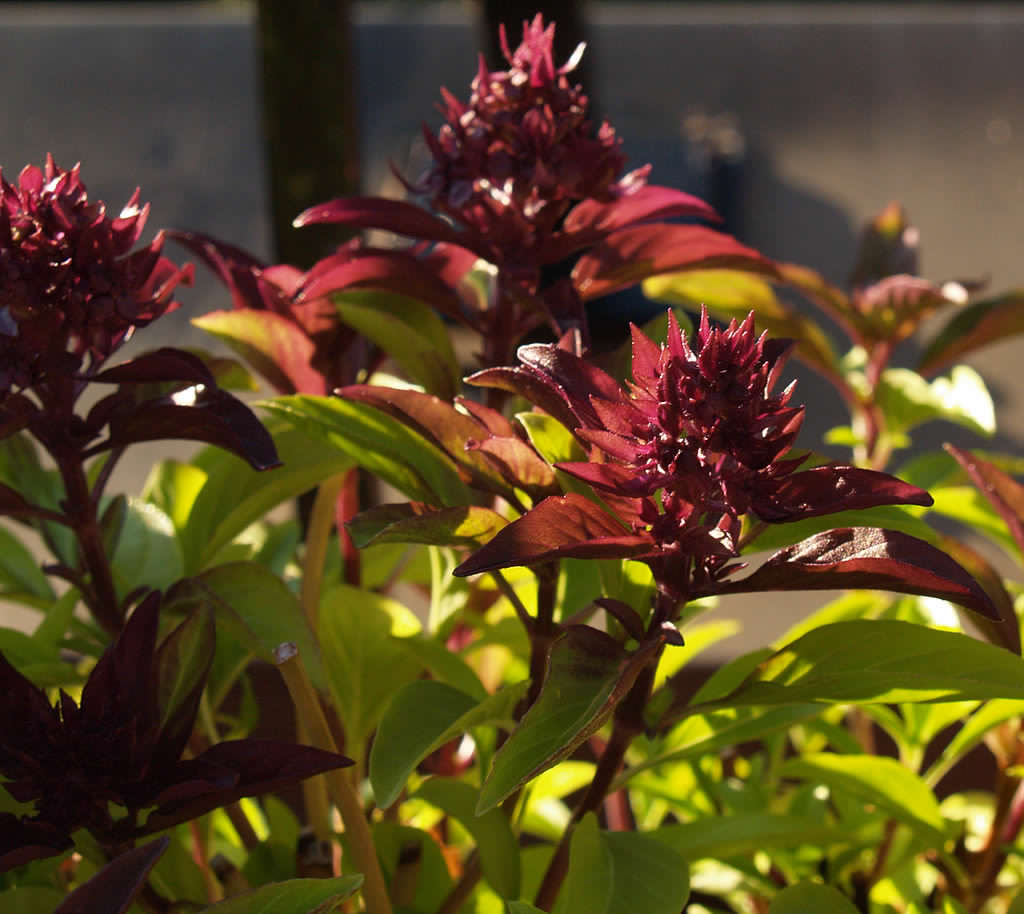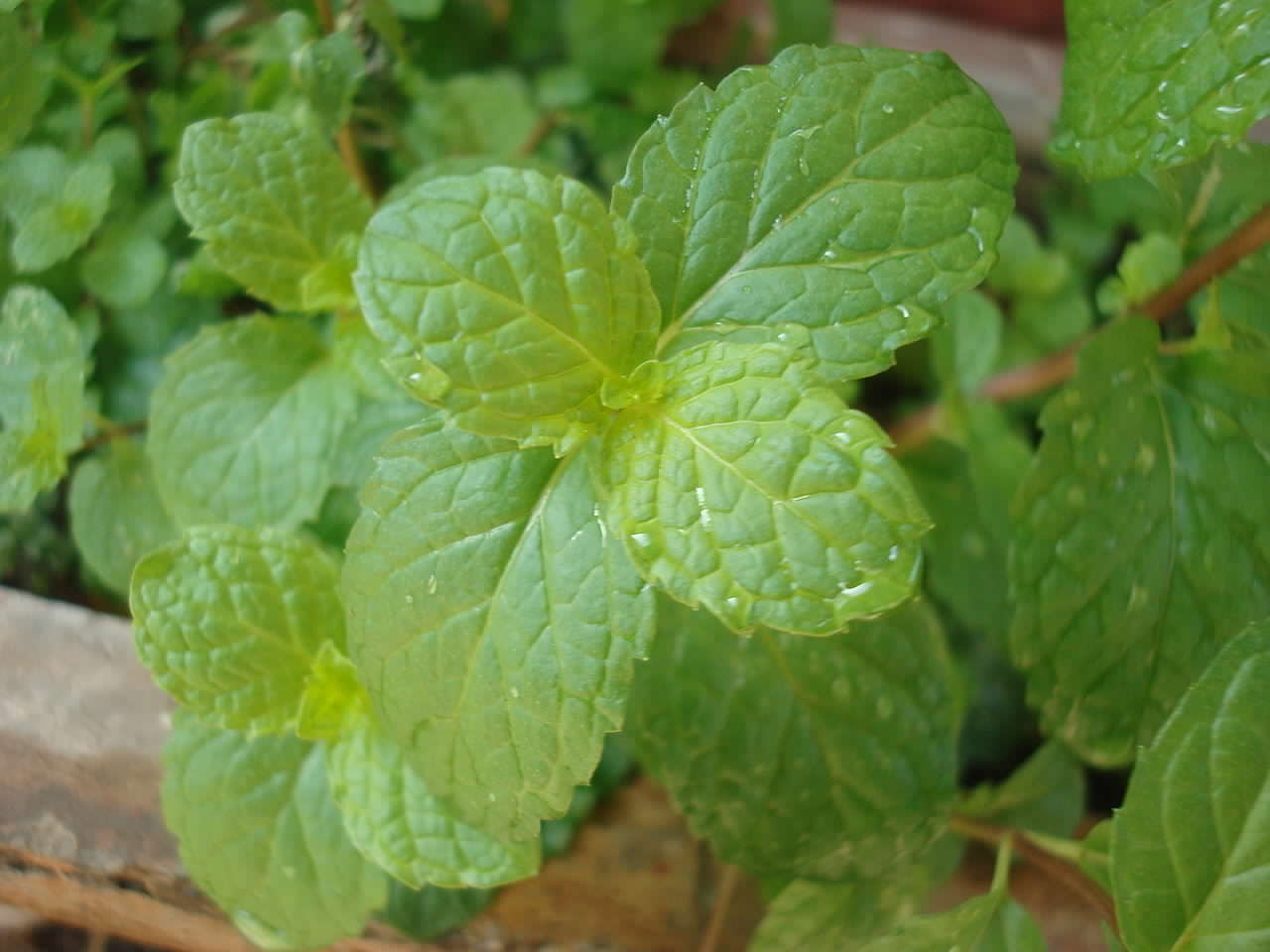
Looking to kick your cooking up a notch? Fresh herbs can make a big difference in any recipe and you can grow many of them in your own backyard! Whether you keep a separate herb garden or scatter them throughout your garden; the bright colors, strong scents, and intense flavors will appeal to all your senses.
Miscellaneous Herbs:
These herbs originate from Northern Europe, Asia, and the Americas. As a result, their growing needs are similarly diverse.
Cilantro
Similar in appearance to Italian parsley, cilantro packs a lot more flavor. This herb is especially short-lived (about 20-25 days before it flowers) so it may be more cost-effective to grow it from seed. If you buy a seed packet, try planting a third of the seeds each week so don’t have to harvest and use all of this herb up at once.
Basil
Although we associate this herb with Mediterranean cooking, it technically originates in Asia. You are likely most familiar with sweet basil (pictured below) and Italian basil varieties – these types of basil go great in red sauces, on pizzas, and in pestos.
But there are also basil varieties that are favored in Southeast Asia such as Thai basil, holy basil, and lemon basil. Thai basil (pictured below) has pointy leaves, purple stems and flowers, and an anise-like flavor. Holy basil is spicy and clove-like in flavor, while lemon basil has citrusy undertones.
For all basil types the leaf is what we harvest. Once the basil begins to flower the flavor in the leaves will turn bitter and the plant will put all its energy into growing the flower and resulting seeds. To avoid this, pinch the flowers off as soon as they appear and the basil will keep on putting out leaves. Incidentally, this is where we get the phrase “nip it in the bud.”
If you do miss a few flowers, all is not lost – simple use them as a garnish. Thai basil flowers are especially lovely.
When you harvest basil cut the stem just above a leaf pair, take the leaves off, and throw the stem away. The basil will start growing new stems from buds near the base of each leaf. If you harvest in this manner you’ll get two new stems for each stem you cut – not unlike a hydra.
Nasturtium
This is one of my favorite garden herbs. Not only are the flowers big and colorful – but you can eat them too! Wash them first, just to be safe, and pop one in your mouth. Nasturtium have a spicy, peppery flavor that will add a real kick to your fresh salad. The round leaves are also edible but aren’t nearly as interesting in flavor or color.
Chives
Chives are very easy to grow, so easy in fact that they can easily become weeds in other parts of your garden. For this reason, I would recommend growing this herb strictly in pots. Also be sure to keep this one from flowering and spreading its seeds!
This herb has an onion-like flavor and can easily be added to salads, soups, and baked potatoes.
Mint
The mint you’re most familiar with comes in varieties such as spearmint and peppermint but there are also novelty varieties such as chocolate mint and lemon mint, to name but a few.
As with chives, mint is a very aggressive grower and can quickly take over a garden. So I must advise, again, that you only grow this plant in a container!
Mint can be used in a variety of recipes, as a simple breath-freshener, or as a garnish. My favorite use of mint, however, is in homemade mojitos!
Psst! Looking for more herbs? Take a look at our article on Mediterranean herbs here!
Thinking of growing herbs in containers this year? Take a look at our article on Container Gardening: DOs and DON’Ts
Annika is the horticulturalist at Peterson Lawn Services. Call (952) 929-0422 to schedule a free garden consultation today!
Looking for fun gardening ideas – not sure where to start? Check out our Pinterest page!
Be sure to “Like” us on Facebook!
Photo Credits:
Cilantro: Alsterdrache, Wikimedia Commons
Basil: Mokkie, Wikimedia Commons
Thai Basil: “Thai basil flower”. Licensed under CC BY-SA 3.0 via Wikimedia Commons – http://commons.wikimedia.org/wiki/File:Thai_basil_flower.jpg#/media/File:Thai_basil_flower.jpg
Nasturtium: Rameshng, Wikimedia Commons
Chives: “Allium schoenoprasum 001” by H. Zell – Own work. Licensed under CC BY-SA 3.0 via Wikimedia Commons – http://commons.wikimedia.org/wiki/File:Allium_schoenoprasum_001.JPG#/media/File:Allium_schoenoprasum_001.JPG
Mint: “Mint (पुदिना)” by Dharmadhyaksha – Own work. Licensed under CC BY-SA 3.0 via Wikimedia Commons – http://commons.wikimedia.org/wiki/File:Mint_(%E0%A4%AA%E0%A5%81%E0%A4%A6%E0%A4%BF%E0%A4%A8%E0%A4%BE).JPG#/media/File:Mint_(%E0%A4%AA%E0%A5%81%E0%A4%A6%E0%A4%BF%E0%A4%A8%E0%A4%BE).JPG
Mojito: Janine, Wikimedia Commons






